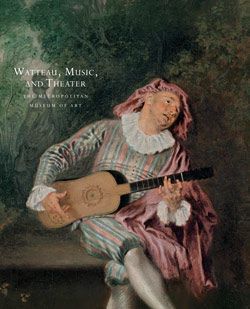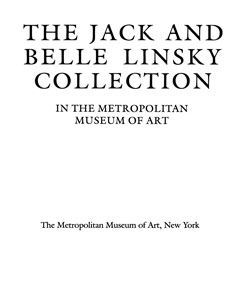Bagolin
Manufactory Höchst Manufactory German
Model attributed to Johann Christoph Ludwig von Lücke German
Bagolin belongs to a series of fifteen porcelains depicting commedia dell'arte characters on pedesta;s that were inspired by garden statues at the Schönborn Palace in Vienna. The series might have been executed for Johann Friedrich Karl von Ostein, the elector of Mains (1743–63) and the patron of the Höchst manufacture, who was closely related to the Schönborns and often sojourned in their Viennese residence. In fact, the limited edition of these porcelain figures points to an exclusive private commission, which unfortunately remains undocumented.[1]
The name Bagolin appears on the engraving by Johann Jacob Wolrab (Nürnbberg, ca. 1720) that served as a model for this porcelain sculpture by Johann Christoph Ludwig von Lücke. Bagolin was not a popular theatrical character and appeared only sporadically on French stages. In the plays Arlequin soldat et bagage, performed by the Iatlian Comedians in 1673, and Les Bagolins, published at The Hague in 1705, he incarnated a vulgar and dim-witted suitor of a young lady, competing unsuccessfully with her lover Léandre. In 1718, Giorgio Maria Raparini listed Bagolin among dozens of zanni, or stock servant figures, from the commedia dell'arte. The inscription on Wolrab's print also refers to him as a servant, while the illustrated play Amor vehementer quidem flagrans... (1729) associates him specifically with Pantalone's household. There is no evidence that Bagolin was personified by a particular Italian comedian, as were Mezzetin or Scaramouche. In fact, in 1673, his part was played by the Harlequin Dominique Bionclelli.
Like its printed source, the present Höchst figure sports a guitar and wears generic servant garb: a loose beret, a thigh-length jacket with ruff collar, long pants, and a cape. The porcelain painter likened it to Mezzetin by covering the costume with multicolored vertical stripes. Exactly the same iconographic type appears under different names in eighteenth-century visual sources, including Mezzetin and Jean Gurgulo. These inconsistencies show that the iconography and nomenclature of commedia dell'arte characters were subject to both artistic license and commercial considerations, such as the effort to maximize sales by diversifying as much as possible the market offering, be it prints or porcelain figures.
[1] Horst Reber, "The Höchst Figures from the Italian Comedy," in Early European Porcelain and Faience as Collected by Kiyi and Edward Pflueger (London, 1993), pp. 104-106.
This image cannot be enlarged, viewed at full screen, or downloaded.



